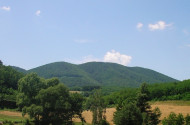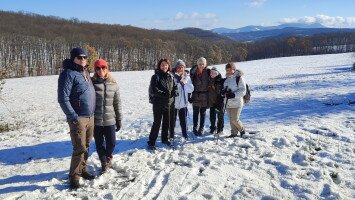
Karanc


- Values
- Karanc
History and value
The typical dome-shaped tip of the Karancs is 725.1 meters above sea level and is the highest point of the Cseres Mountains. Originally created by the rise of andesite magma in the Middle Miocene (15 million years ago), it was later partially destroyed. The contact between the Andesite and the sandstone above it is revealed by the Sátoros Quarry. Its dome-like shape differs from the surrounding, lower-lying basaltic volcanic cone hills and ridges formed by lava flows. n the porphyry-structured andesite, we also find larger-grained, reddish-colored garnets that crystallized at great depths in the magma chamber. In addition to rock-forming amphibolone, pyroxene, and biotite, it also contains minerals precipitated from hot (hydrothermal) solution, e.g. calcite, aragonite and zeolites. The ascending magma (so-called laccolite) also created a number of projections - apophysics, which emerge between Karancs and Mount Láz.
A red marked hiking trail leads to Karancs from Sátorosbánya. There is a viewpoint on the top of the mountain and the pilgrimage site of St. Margaret's Chapel below.Degree of protection: 2, Landscape Protection Area of Cseres Mountains.RELATED














